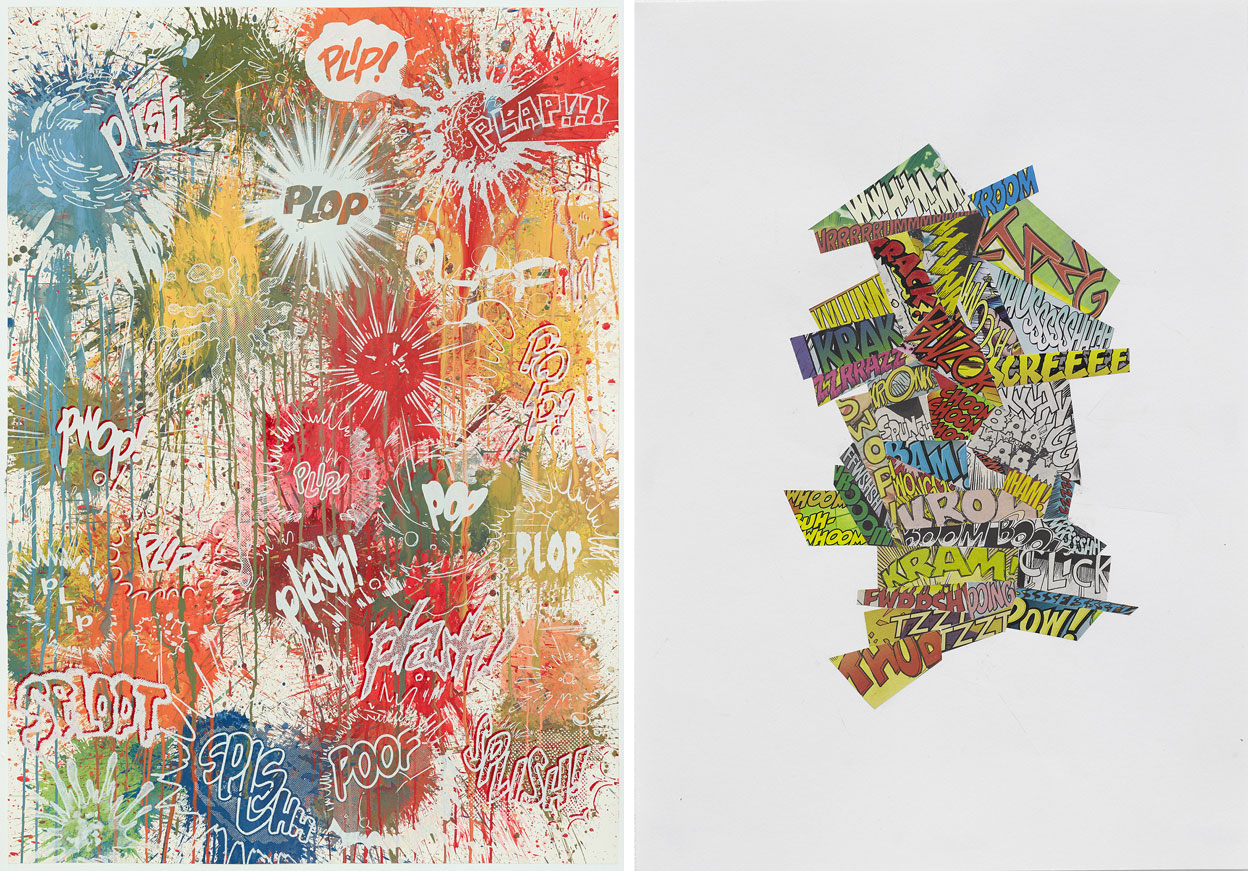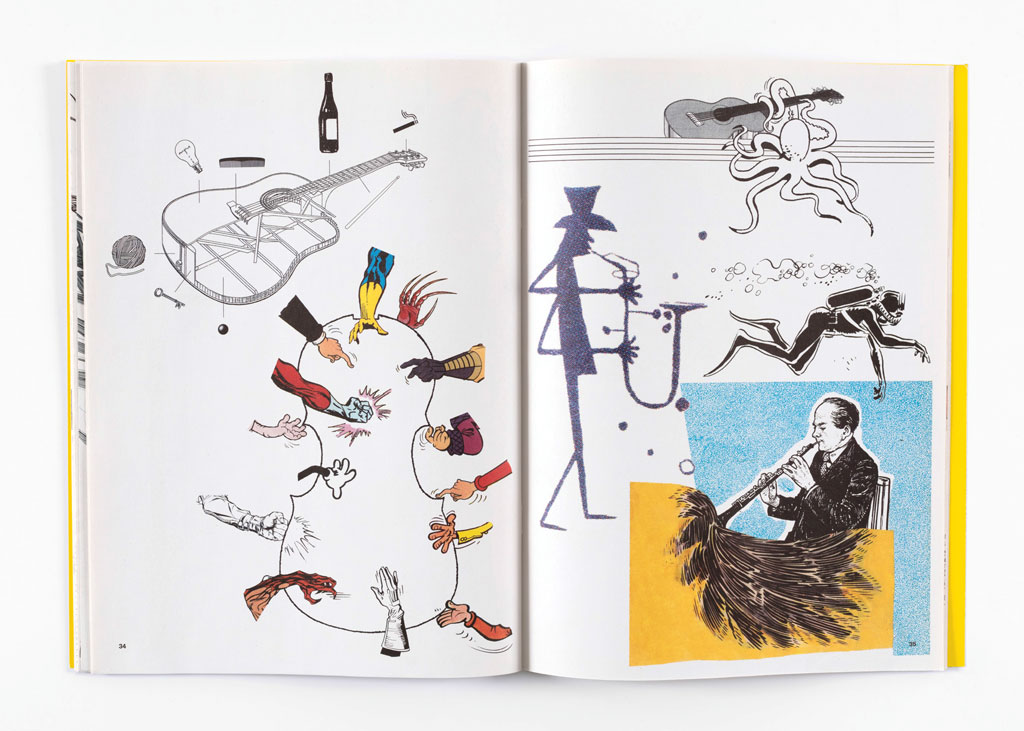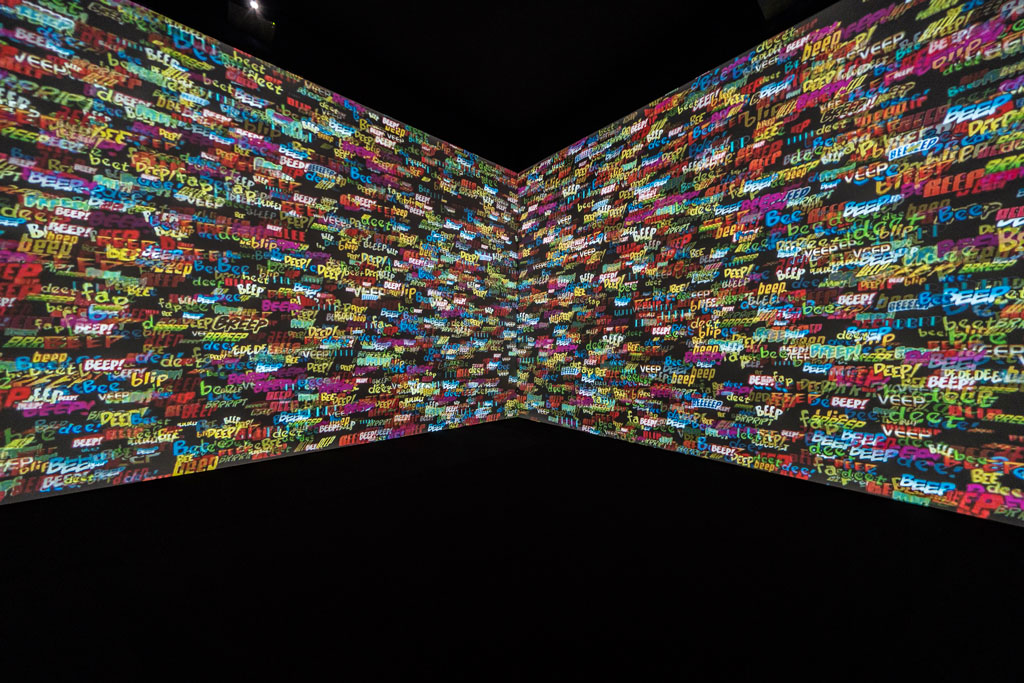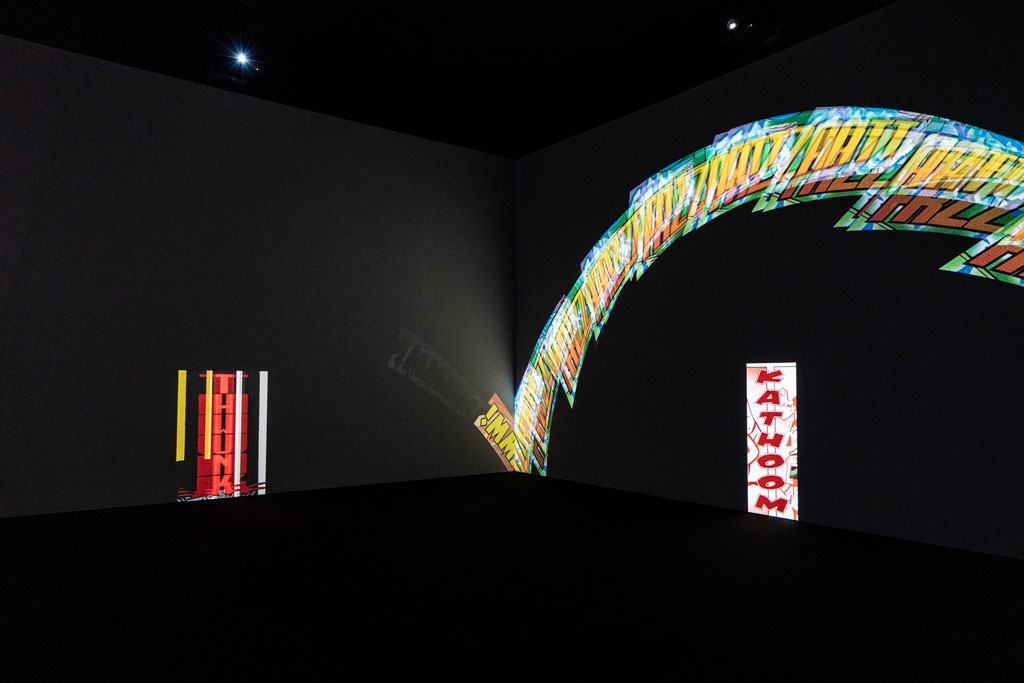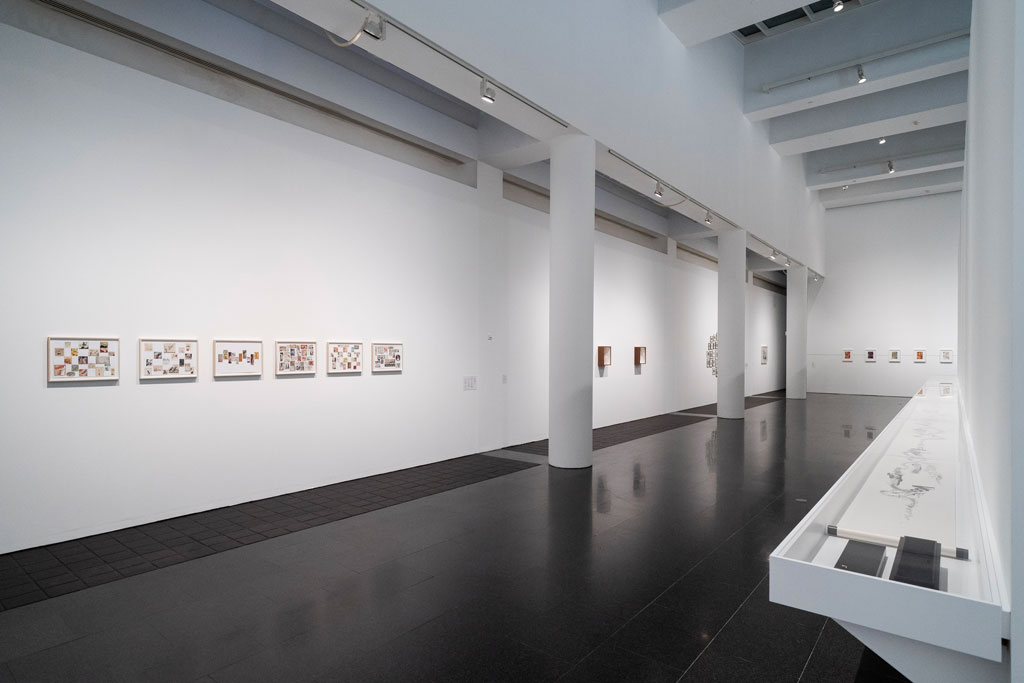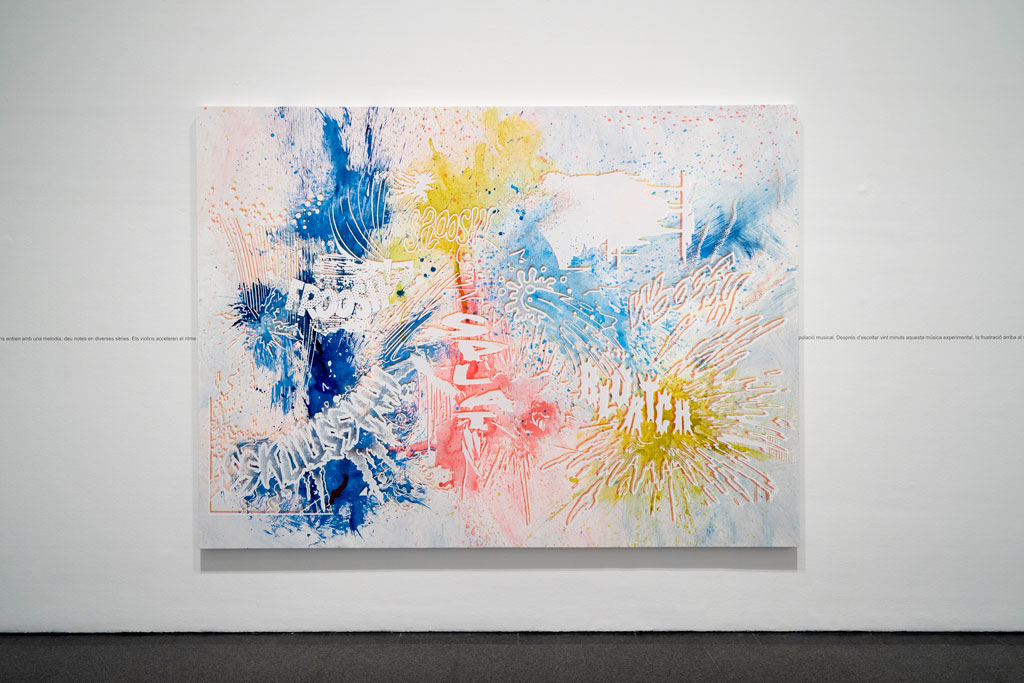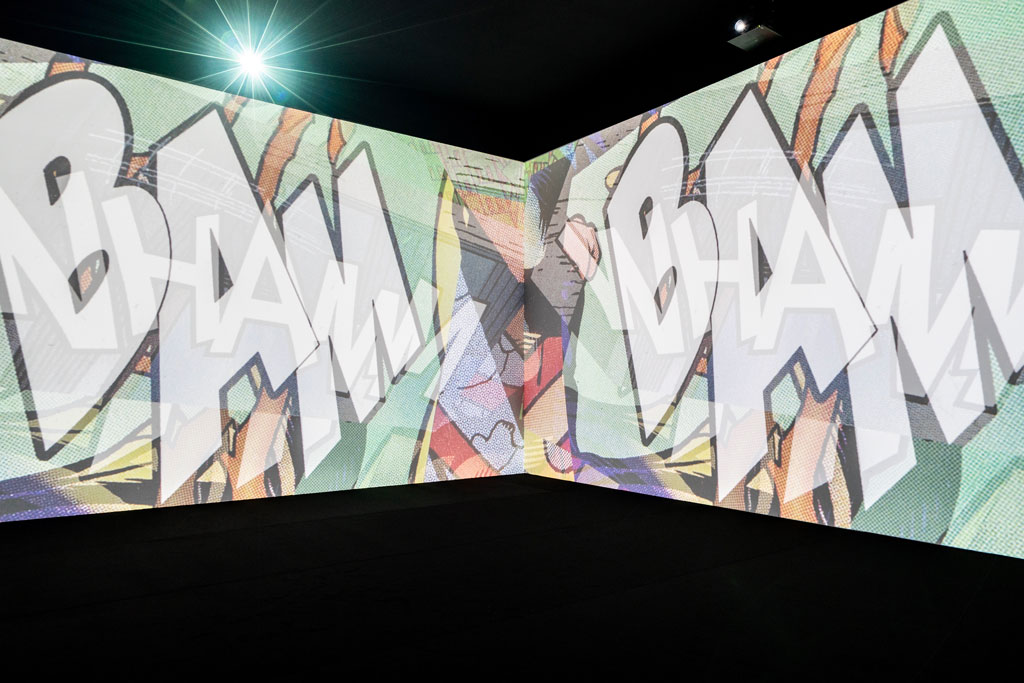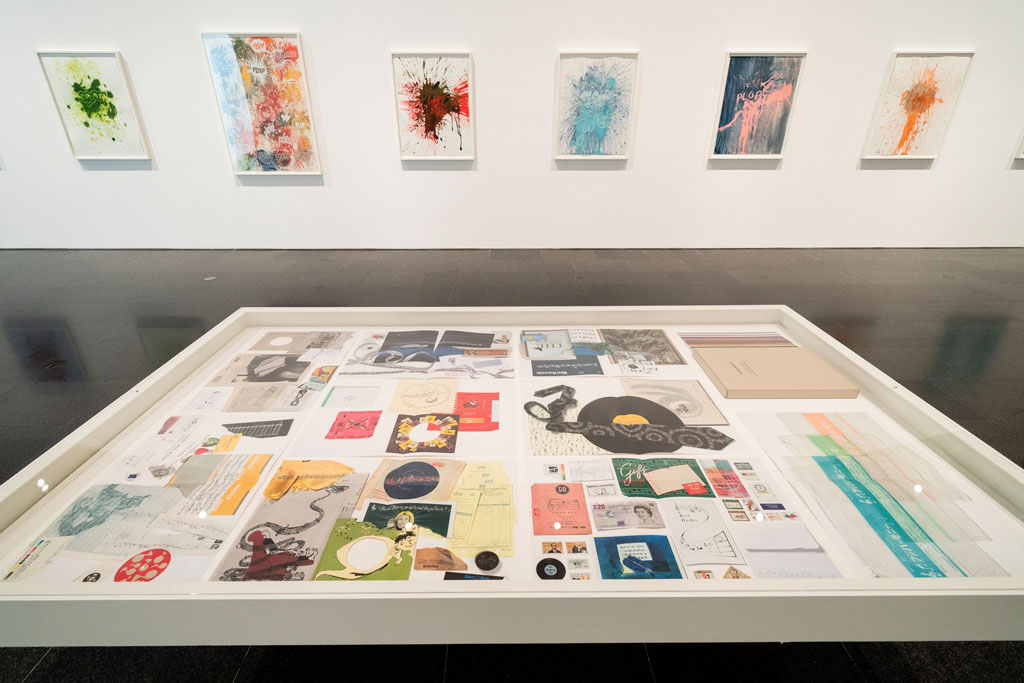ART CITIES:Barcelona Christian Marclay
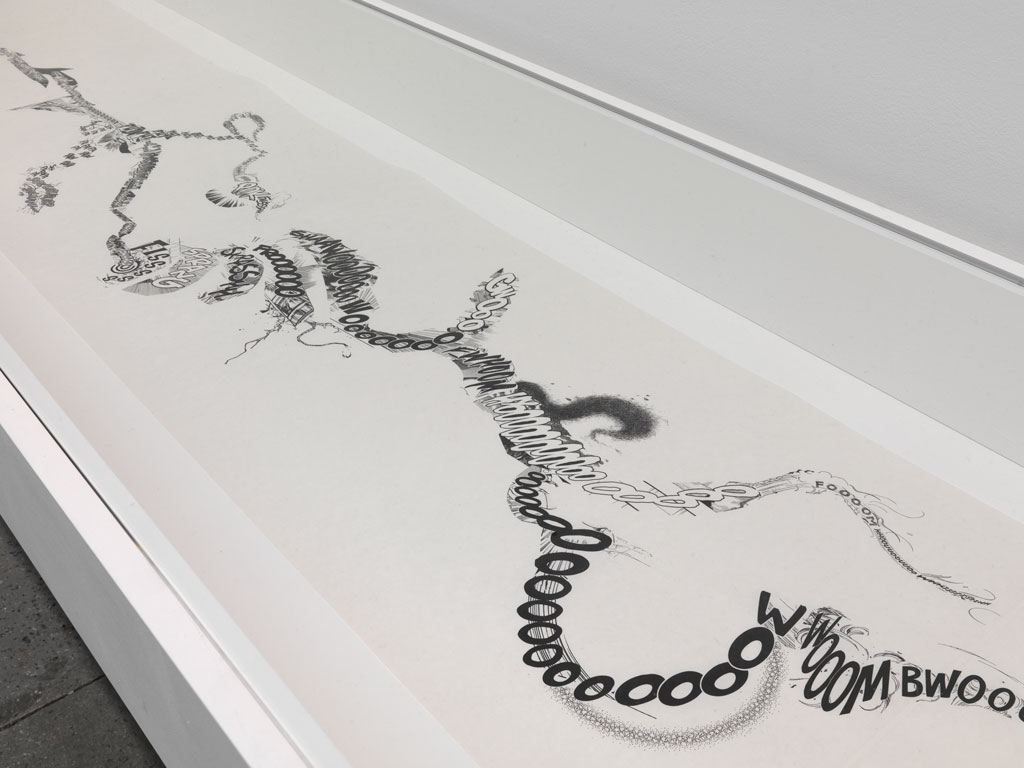 Over the past 35 years, Christian Marclay has explored the fusion of fine art and audio cultures, transforming sounds and music into a visible, physical form through performance, collage, sculpture, installation, photography and video. Marclay began his exploration into sound and art through performances with turntables in 1979, while he was still a student. Over the last decade, Marclay has created ambitious work in a variety of media. The video “Guitar Drag” (2000) features a Fender Stratocaster being dragged behind a pick-up truck along rough country roads in Texas.
Over the past 35 years, Christian Marclay has explored the fusion of fine art and audio cultures, transforming sounds and music into a visible, physical form through performance, collage, sculpture, installation, photography and video. Marclay began his exploration into sound and art through performances with turntables in 1979, while he was still a student. Over the last decade, Marclay has created ambitious work in a variety of media. The video “Guitar Drag” (2000) features a Fender Stratocaster being dragged behind a pick-up truck along rough country roads in Texas.
By Efi Michalarou
Photo: MACBA Archive
The exhibition “Compositions” is the first for over a decade in Spain devoted to Christian Marclay and includes a selectionof works focusing on his sonic compositions, from graphic scores to video installations. Marclay has consistently focused on the relationship between sound and vision, exploring the ways that sound can be manifested visually. As the artist himself said “music runs through almost everything I do”. While Marclay has produced video, sculpture, sound recording and performance, as well as text work, graphic scores, collages and prints, this exhibition includes some of his recent audio-visual installations, alongside a select number of his earlier works. The exhibition addresses Marclay’s concern with composition through his recourse to popular culture and mass media, together with his exploration of both traditional and digital technologies, and their material qualities. The exhibition focuses on the manner in which he composes through his interdisciplinary use of appropriation, montage, remixing and improvisation, practices that themselves traverse the boundaries between the experimental and the popular. On the one hand, Marclay can be situated in relation to the avant-garde and experimental traditions via the aesthetic legacies of Dada, Marcel Duchamp, Jean Tinguely, John Cage, Fluxus and Happenings, and, on the other, he engages with popular culture through his involvement with manifestations such as punk rock, comics, fanzines, cinema and aspects of underground subcultures. Even while Marclay has engaged with some of the major figures of the historical Avant-Garde, including Edvard Munch and Duchamp, he has also established a dialogue with contemporary peers from the differing fields that his work has sought to traverse, including that of filmmaker Bruce Conner, performance artist Laurie Anderson and musician John Zorn, as well as the band Sonic Youth, among many others. Early in his career he became involved in experimental performance through his influential role in the development of turntablism (the use of record turntables to make compositions, especially using mixes and manipulations of sound) and his relationship to plunderphonics (the compositional potential of sound collage and/or sampling), becoming a significant practitioner of both. “Video Quartet” (2002) is a four-screen, audio-visual composition made from found movie clips, is the only work included in the exhibition that uses sound audibly. The excerpts feature moments when music or sound occurs in films. Marclay edits these together so that each screen features a different clip that is carefully synchronised with the others to form an overall musical quartet. In addition to moments that include musical instruments or the human voice, the precise montage also uses excerpts featuring noisy actions. All sounds, musical or concrete, are therefore part of the composition. In the interactive installation, “Chalkboard” (2010) Marclay invites visitors to participate in the act of composing by marking the architecturally-scaled chalkboard ruled with musical staff lines. This open and evolving composition is then interpreted by musicians in a series of performances scheduled during the exhibition. The board is erased afterwards and the process restarted until the next performance. The exhibition includes a number of works Marclay describes collectively as ‘scores’, but which often take unconventional forms. “Chalkboard” is recognisable as a score through the structure of the staves, yet it undermines traditional scoring by giving the audience the freedom to make any marks they wish, including drawings, scribbles and graffiti, and letting the musicians play according to their own free interpretation. The slide-projection “Zoom Zoom” (2007–19), is an example of Marclay’s ‘graphic scores’, a series of unconventional compositions that use images as well as text as the basis for musical performances. This work also forms part of Marclay’s extended investigation into onomatopoeia – words that replicate the sounds or actions that they describe. It is comprised of photographs taken by the artist that document the use of onomatopoeia in the urban environment, in advertisements, branding and design. This work was conceived for the vocal artist Shelley Hirsch, to be performed with Marclay triggering the images from a laptop in a call-and-response duet. A collage composed of extracts from music reviews, “Mixed Reviews” (1999-2001) consists of sentences that describe musical sounds. For each display, the prior translation is re-translated into the local language where it is exhibited. Through this process, the descriptive phrases become ever more distant from the sounds they were initially intended to describe, highlighting the fact that the text is itself an abstraction through language that can never reproduce the sounds. While it has been previously translated into German, Japanese and French, among many other languages, here the text is translated into Catalan for the first time. “Ephemera” (2009) is a ‘graphic score’ that takes the form of 28 folios that document a collection of musical notations found on packaging, clothes, record covers and other printed materials. These found notes have been extracted by the designers from music or otherwise have been imagined specifically to symbolise music graphically. The British experimental musician Steve Beresford, who has performed Ephemera on both piano and a Baroque organ, has described how in “reading’ the score ‘the notation (or approximation of notation) is sometimes vertical, quite small and slightly wonky… sometimes the difference between improvising and playing one of Christian’s pieces is obvious: readable bits of notation in Ephemera, which turn out to be old American folk songs get played quite literally”. The text work “Mixed Reviews” (1999–2019) is a collage composed of extracts from music reviews, consisting of sentences that describe musical sounds. For each display, the prior translation is retranslated into the language of the place in which it is shown, the descriptive phrases becoming ever more distant from the sounds they were initially intended to represent, highlighting the fact that the text is itself an abstraction through language that can only ever approximate the sounds. Here, the text will be translated into Catalan for the first time. “Imaginary Records” (1987-97) constitute an extended series in which Marclay intervened by collaging the covers of vinyl records. Through this process, he often simplified the design, removing extraneous details, and emphasising with humour the theme of sound, or silence, through word play and visual-textual puns. The most recent work in the exhibition, “Investigations” (2017-18) reflects Marclay’s interest in photography and the non-traditional use of classical instruments. This score was made from a collection of 100 found and cropped images of hands playing piano. The score is to be interpreted by a large ensemble of pianists, who are asked to decipher the sound made when the photograph was taken and notate the results of their investigation. “Manga Scroll” (2010), is composed of onomatopoeia, but in this case the words have been drawn from North American translations of Japanese graphic manga novels and collaged into an undulating, linear composition on a long paper scroll. Such scrolls date from the eleventh century onwards in Japan and might be thought of as a precursor to contemporary Japanese graphic novels or serialised comics. The immersive installation “Surround Sounds” (2014-15) is a 360-degree video animation made from scanned comics. It is perhaps the culmination of Marclay’s exploration of onomatopoeia. This time, onomatopoeias are animated into an all-encompassing, four-screen silent composition. Like much of the exhibition, it is both playful and contradictory: the visitor is quite literally surrounded by a visual cacophony, despite hearing nothing, and is invited to imagine the sounds whirring, buzzing or swooping around them.
Info: Curator: Tanya Barson, MACBA (Museu d’Art Contemporani de Barcelona) Plaça dels Àngels 1, Barcelona, Duration: 12/4-24/9/18, Days & Hours: Mon & Wed-Fri 11:00-19:30, Sat 10:00-20:00, Sun 10:00-15:00, www.macba.cat
